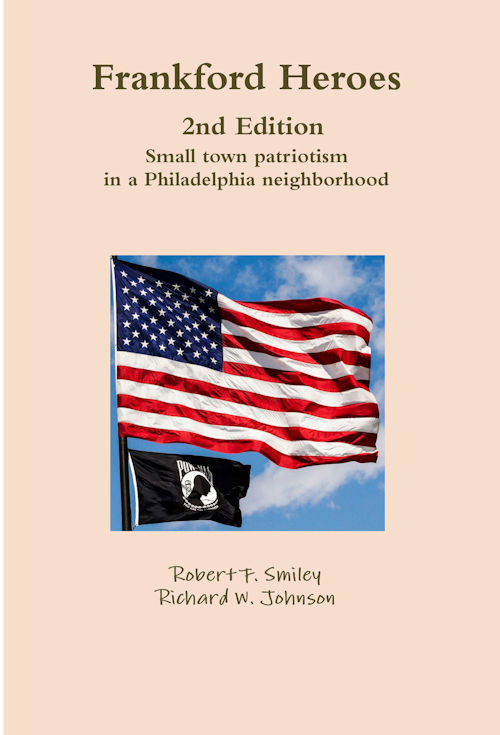The name Castor means more than a quick way around Oxford Circle.
An international reunion of well over 230 members of the Castor family of Philadelphia was held last weekend (Aug. 12-14th), at the Radisson Hotel, NE in Bensalem. The event commemorated the 275th year that their ancestor, Hans George Gerster(Castor), came to America in 1736 from Basel, Switzerland. The 12 generations of the Castor Family plus six Swiss guests, gathered throughout the weekend to discuss many topics including the difficult voyage of Hans by ship to America and life as an Emigrant in the early 1730’s. This included experiences living in the early days of Philadelphia with the Indians.
Michael Fitzpatrick, U. S. Congressman PA of the 8th district, spoke at the Saturday night banquet and presented organizer, Bob Castor, with a flag that flew over the White House in honor of the Castor reunion. Workshops were featured Saturday and family members learned more about some of the numerous contributions their ancestors made to the history of Philadelphia as they traced their colonial roots.
Hans and his wife had lived in the Philadelphia area and Hans earned a living as a linen weaver. In 1762 they purchased a 202 acre plantation in what was called Oxford Township (Oxford Circle). A road leading to their farm was called Castor Avenue. Hans and his sons George, Frederick and Jacob were founding members of the Presbyterian Church of Frankford, which was formerly the German Reformed Church.
Another descendant was George Castor, who moved to Pennypack Farms. Horace Castor(1870-1966) an Architect, was responsible for the building of over 1,000 buildings in Philadelphia and other areas including Einstein Hospital, Methodist Episcopal Hospital, Scottish (Shriner’s) Town Hall and over 30 churches and numerous schools and industrial plants.
Thomas Castor and his brother patented and manufactured carriages and the first horse drawn cars to run on steel rails in 1860. These cars were so beautifully painted and decorated that he also built cars for Barnum and Bailey Circus wagons. Thomas improved early transportation such as the spiral staircase for double decker cars. He improved lighting and ventilation on the cars and invented new features such as the dump wagon.
George A. Castor was a U.S. Congressman from Philadelphia and died in office in February, 1906. He built “Stonyhurst” Mansion on the grounds of what is now Father Judge High School. The mansion in now owned by the Nuns of the Missionary Servants of the most Blessed Trinity.
General Samuel Castor was Commander of the troops escorting Marquis De Lafayette through Philadelphia in his farewell tour to Washington in 1824
A third book of the Castor family “A Castor Family in America, Volume lll” has been updated by Robert (Bob) Castor and contains present information of family charts, pictures and stories. The reunion concluded on Sunday with a service at the Frankford Presbyterian Church located on Frankford Ave. and Church St. and a visit to the Historical Society of Frankford. The group then traveled to Stonyhurst Mansion for a tour of the grounds and the first floor.








this is my familyy!!!
In my research I have had an occasion to pull many of the land Deeds of the Castors and the Neffs.
Gabbie, about your family:
Excerpt:
“In 1769 the Frankford Street Reformed Church, now the Frankford Presbyterian, was organized chiefly by Swiss from Basle. The following names appear in the first congregation: Rudolph Neff, Jacob Neff, George Kaster, Sr., George Kaster, Jr., Frederick Easter, Rudolph Mower, Gerick Judy, Peter Mood, Samuel Neswinger, Jacob Myer, Jacob Lelelly, Martin Laty, Henry Rohrer.
To these were afterward added,— Jacob Zebley, Jacob Oneyer, Rudolph Skutes, Leon Hardfrollick, Jacob Schmidt, David Bleuh, Frederick Sheibly, Leonhardt Eaufman, and Ulrich Neff.
A lot was purchased on a street now called Church Street, running from Frankford to Paul Street, from Henry Paul, by deed to Henry Rohrer, dated Feb. 16, 1769. The latter conveyed the property on the 12th of October to the congregation. April 23, 1770, John Finney transferred to them a lot on which a parsonage was afterward erected.
The first church was built on the southeasterly part of the lot. There were no pews, but benches were used. The work was commenced in April, 1770; the corner-stone was laid on May 4th by Rev. Frederick Foehring, and the church was dedicated November 11th.
This church cost £382 13s. 6 1/2d., and by the 13th of February, 1771, £375 5s. 9d. had been collected from members and others, and the persons authorized to receive subscriptions were discharged.
Rev. Mr. Foehring was in charge of this church probably until the Revolution. Rev. John Christian Stalschmidt supplied the pulpit in August, 1770.
We now come to the Revolutionary period, and the condition of the German Reformed Churches that clustered in and about Philadelphia at that time.” –
History of Philadelphia, 1609-1884, Volume 2 By John Thomas Scharf, Thompson Westcott, p. 1414.
Also read:
A chronicle, together with a little romance regarding Rudolf and Jacob Näf
http://www.google.com/search?tbm=bks&tbo=1&q=%22Rohrer%22+%22Frankford%22&btnG=
J.M.